Making Scope 3 Emissions Manageable: You’re the Climate Hero!
Making Scope 3 Emissions Manageable: The First Steps to Success
Imagine your small business leading the charge in sustainability, cutting costs, and attracting eco-conscious customers. Tackling Scope 3 emissions – the indirect emissions throughout your value chain – might seem overwhelming. But making Scope 3 emissions manageable doesn’t require advanced tools or a huge budget.
This guide will show you beginner-friendly steps to start reducing emissions, proving that even small businesses can take impactful actions to tracking Scope 3 emissions.

Step 1: Mapping Your Value Chain
Before reducing emissions, you need to identify them. Mapping your value chain is the foundation of effectively tracking your Scope 3 emissions.
Scope 3 emissions commonly occur in areas like:
- Purchased goods and services: Emissions from the production of what you buy.
- Transportation and distribution: Shipping goods to and from your business.
- Waste management: How waste from your operations is handled.
- Employee commuting: The emissions tied to your team’s travel.
Here’s how to start
You can easily get started with mapping your Scope 3 emissions by downloading our Scope 3 Emissions Value Chain Template and following the step by step guide. Key focus areas for mapping your value chain are:
- List Key Activities: Break your operations into steps like procurement, production, and delivery.
- Identify Emissions Sources: Note where emissions occur at each stage (e.g., energy use or transportation).
- Prioritize Hotspots: Focus first on areas likely to have the highest emissions.
💡 Pro Tip: Don’t let incomplete data stop you. Start with sector averages or estimates and refine them as you go.
Step 2: Engaging Suppliers
Suppliers are essential partners in effectively tracking your Scope 3 emissions. Open up the conversation by:
- Requesting Emissions Data: Ask suppliers for details on their energy use or emissions.
- Collaborating on Solutions: Explore ways to reduce emissions together, such as sourcing local materials.
- Aligning on Goals: Share your sustainability objectives and invite them to join the journey.
Don’t know how to approach your suppliers? Don’t sweat it! We have an entire toolkit with a detailed guide of what to say, and when making engaging your suppliers a breeze!!
🌟 Success Story: Handi Foods, a Toronto-based family bakery, reduced Scope 3 emissions by switching to recycled packaging, diversifying its supplier portfolio, and investing in energy efficiency measures like LED lighting. These practical changes not only minimized their carbon footprint but also strengthened their supply chain resilience and environmental leadership.
Step 3: Start Small with Simple Tools
Making Scope 3 emissions manageable doesn’t require complex technology. Begin with tools you already have:
- Excel or Google Sheets: Track emissions estimates and progress.
- GHG Protocol Resources: Free guides to help calculate emissions in key areas.
- Online Calculators: Many websites offer sector-specific tools to estimate carbon footprints.
🎁 Bonus Suggestion: Insert a downloadable “Starter Kit for Making Scope 3 Emissions Manageable” here, including templates for mapping value chains or supplier outreach.
Step 4: Focus on Incremental Wins
Small steps can lead to big changes, helping you make Scope 3 emissions manageable while demonstrating meaningful progress to your customers and stakeholders.
- Switch to eco-friendly packaging materials.
- Optimize delivery routes to reduce fuel use.
- Promote carpooling or remote work for employees.
Step 5: Monitor Progress and Celebrate
Transparency and milestones motivate action. Keep making Scope 3 emissions manageable by:
- Setting Clear Goals: For example, reducing packaging waste by 20% in a year.
- Measuring Regularly: Track progress monthly or quarterly and adjust strategies as needed.
- Sharing Wins: Post milestones on your website or social media.
🌱 Quick Win: Ethique, a New Zealand-based beauty brand, has committed to zero-waste by offering solid beauty bars in compostable packaging, effectively eliminating plastic waste. This dedication to sustainability has attracted a loyal customer base and positioned Ethique as a leader in eco-friendly beauty products.
Why Making Scope 3 Emissions Manageable Matters
Addressing Scope 3 emissions is about more than compliance – it’s about safeguarding the planet, strengthening your brand, and staying ahead of regulations. By making Scope 3 emissions manageable, you can show your customers and partners that you’re serious about sustainability.
Remember, every small action you take inspires others in your value chain to follow suit. Even as a small business, you can create ripples of change.
Your Action Plan for Making Scope 3 Emissions Manageable
- Map your value chain and identify hotspots.
- Engage suppliers and collaborate on reductions.
- Use simple tools to start tracking emissions today.
- Set clear, actionable goals and monitor progress.
- Celebrate your successes and share them widely.
Taking control of your Scope 3 emissions is within your reach. Start today and lead your business toward a greener, more resilient future.



